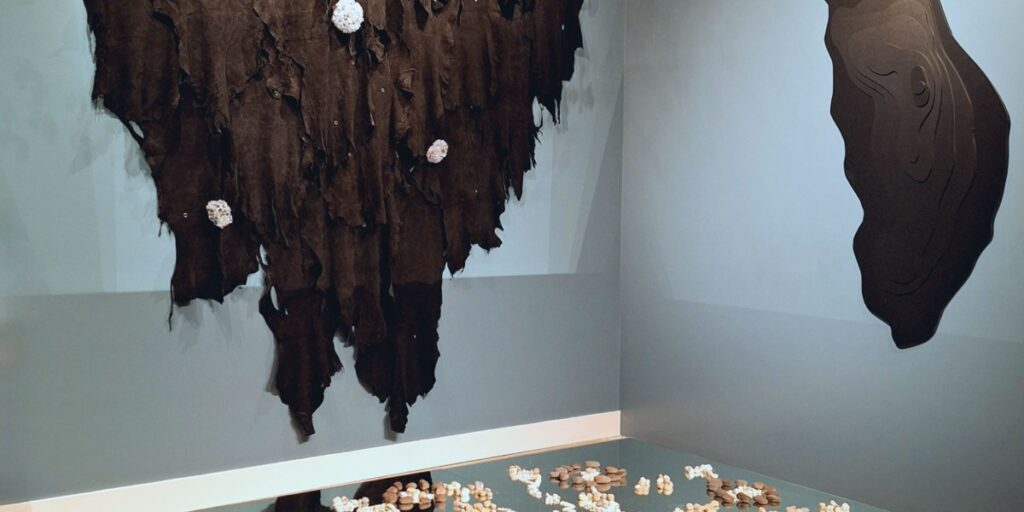Suzanne Kite’s AI art installations, for example, model a Lakota framework of data sovereignty: intelligence that emerges only through reciprocal, consensual interaction. Unlike systems that assume user consent via opaque terms of service, her kinetic machines require the viewer’s physical presence—and give something back in return.
“It’s my data. It’s my training set. I know exactly what I did to train it. It’s not a large model but a small and intimate one,” Kite says. “I’m not particularly interested in making the most technologically advanced anything. I’m an artist; I don’t make tech demos. So the complexity needs to come at many layers—not just the technical.”
Where Kite builds working prototypes of consent-based AI, other artists in this cohort explore how sound, robotics, and performance can confront the logic of automation, surveillance, and extraction. But Native people have never been separate from technology. The land, labor, and lifeways that built America’s infrastructure—including its tech—are Indigenous. The question isn’t whether Native cultures are contributing now, but why they were ever considered separate.
Native technologies reject the false binaries foundational to much Western innovation. These artists ask a more radical question: What if intelligence couldn’t be gathered until a relationship had been established? What if the default were refusal, not extraction? These artists aren’t asking to be included in today’s systems. They’re building what should come next.
Suzanne Kite
2023
For Kite, the fundamental flaw of Western technology is its severance of knowledge from the body. In this installation, a four-meter hair braid with embedded sensors translates the artist’s body movements into machine-learning algorithms. During her live performance, Kite dances while the braid reads the force and rhythm of her gestures, generating audio responses that fill the museum gallery of the Institute of American Indian Arts in Santa Fe, New Mexico. Below her, stones arranged in patterns reflecting Lakota star maps anchor the performance in traditional astronomical knowledge.
COURTESY OF THE ARTIST
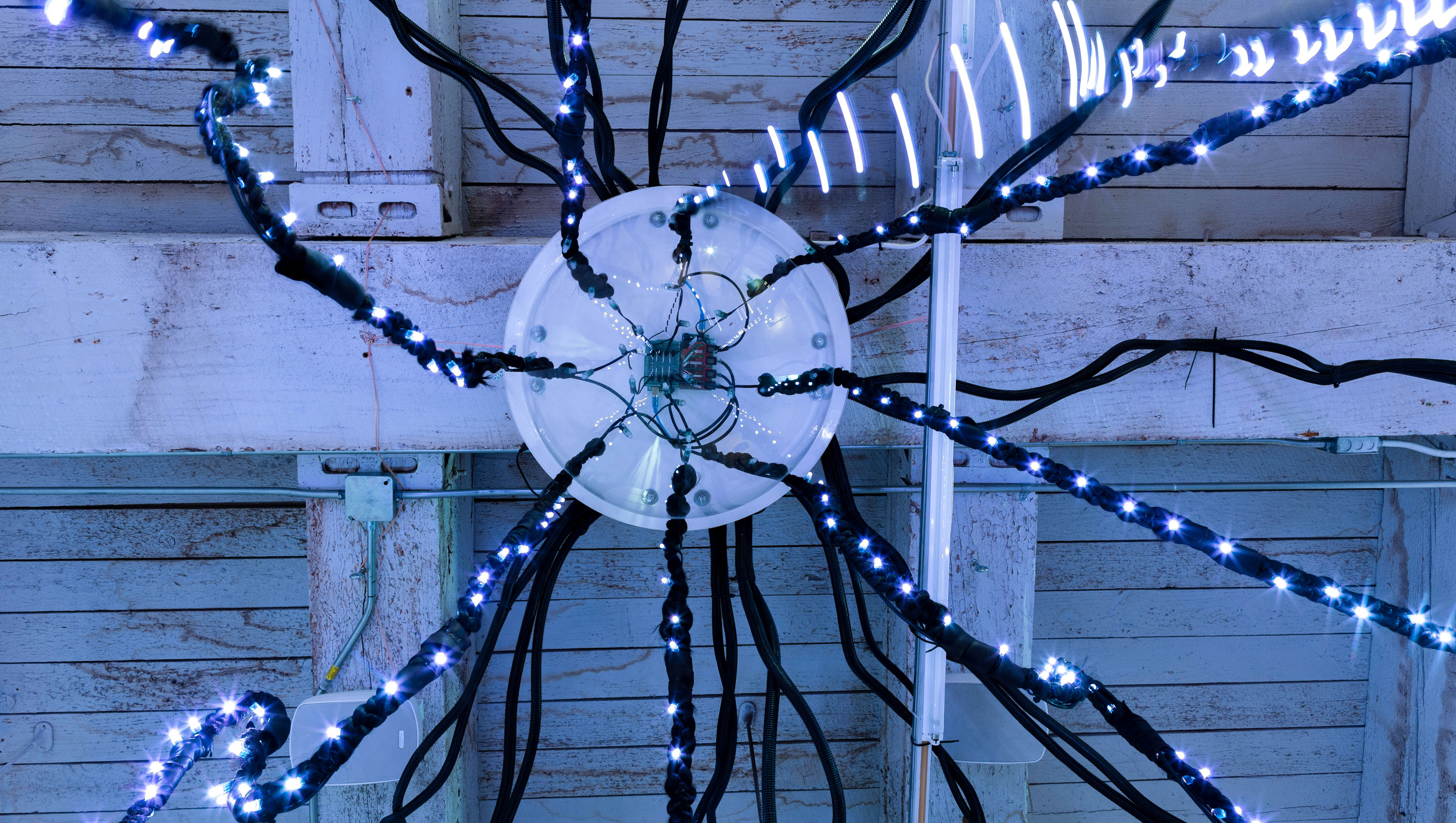
2019
This installation uses embedded AI to speak and respond to viewers, upending assumptions about intelligence and agency. “People listen close, I whisper / The rock speaks beyond hearing … Many nations speaking / We speak to each other without words,” it intones, its lights shifting as viewers engage with its braided tendrils. The piece aims to convey what Kite calls “more-than-human intelligence”—systems rooted in reciprocity, the fundamental principle that all relationships involve mutual exchange and responsibility.
COURTESY OF THE ARTIST
Raven Chacon
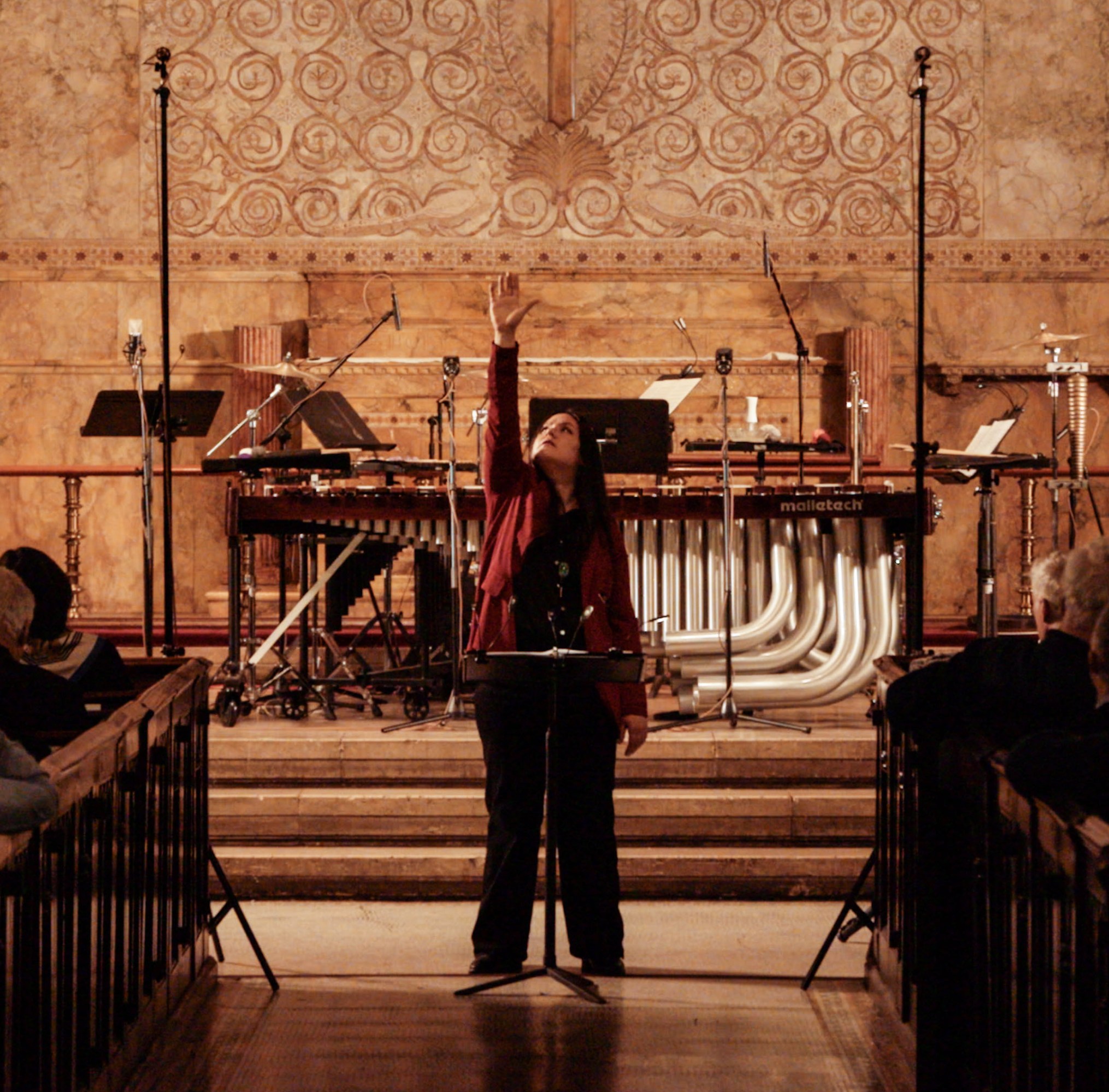
2021
Raven Chacon’s Pulitzer Prize–winning musical composition Voiceless Mass premiered in 2021 at the Cathedral of St. John the Evangelist in Milwaukee. The piece generates what he calls “sounds the building can hear”—electronic frequencies that exploit the cathedral’s acoustics to create spectral voices without human vocal cords, a technological séance that gives presence to historical absence. Each site-specific performance is recorded, generating material that mirrors how sensor networks log presence—but only with explicit consent.
COURTESY OF THE ARTIST
Nicholas Galanin
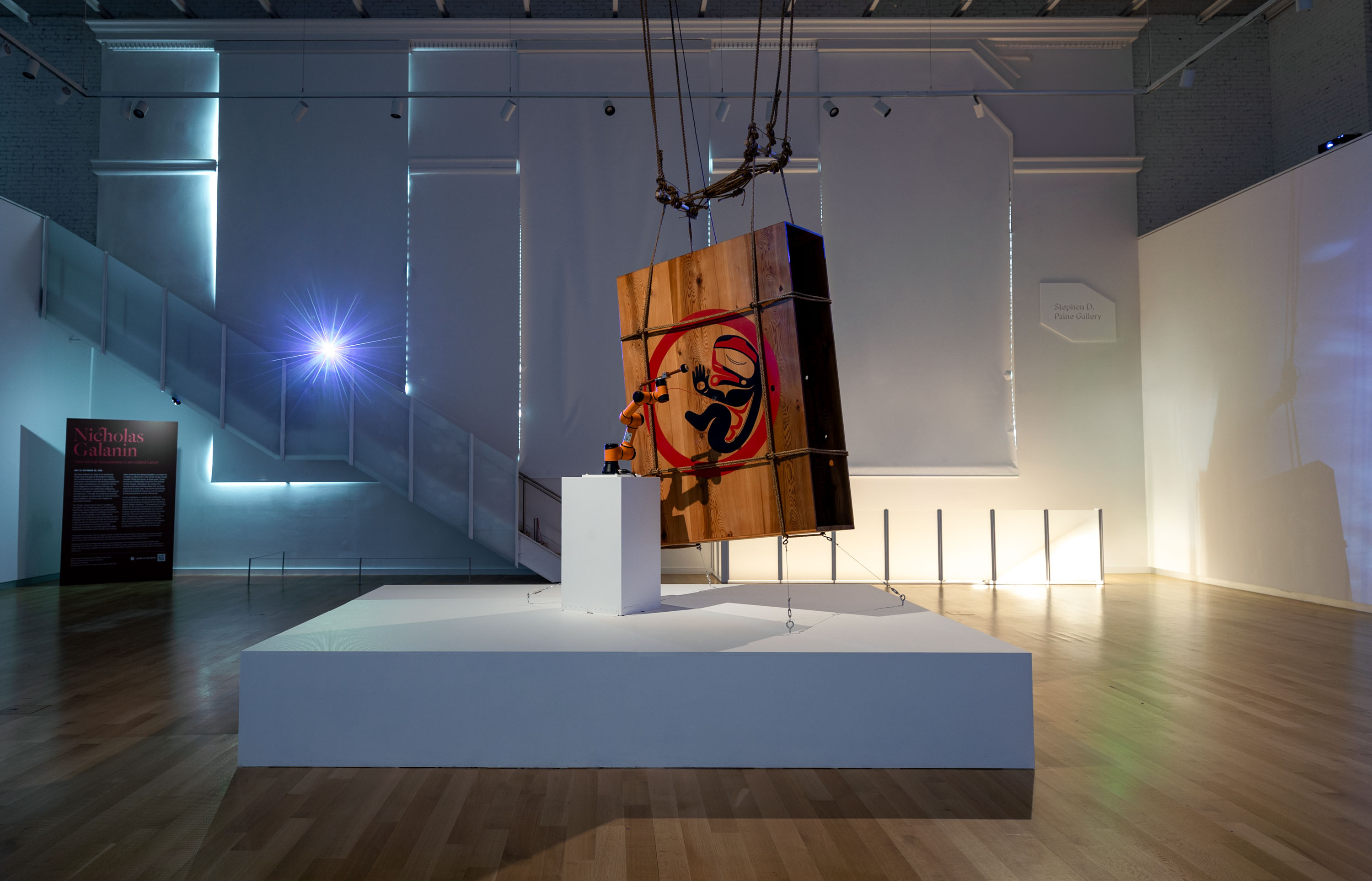
2025
Galanin’s mechanical drum installation stages a conflict between machine motion and human memory, asking what happens when culture is performed without a consenting body. A box drum—an instrument historically carved from red cedar and hung with braided spruce root—is here made of cherrywood and suspended from the ceiling at the MassArt Art Museum in Boston as is traditionally done in Tlingit plank houses. Played at tribal meetings, celebrations, and ceremonies, these drums hold sonic memory as well as social function. A mechanical arm strikes, unfaltering, at the tempo of a heartbeat; like a warning, the sound pulses with the tension between automation and ancestry.
COURTESY OF THE ARTIST
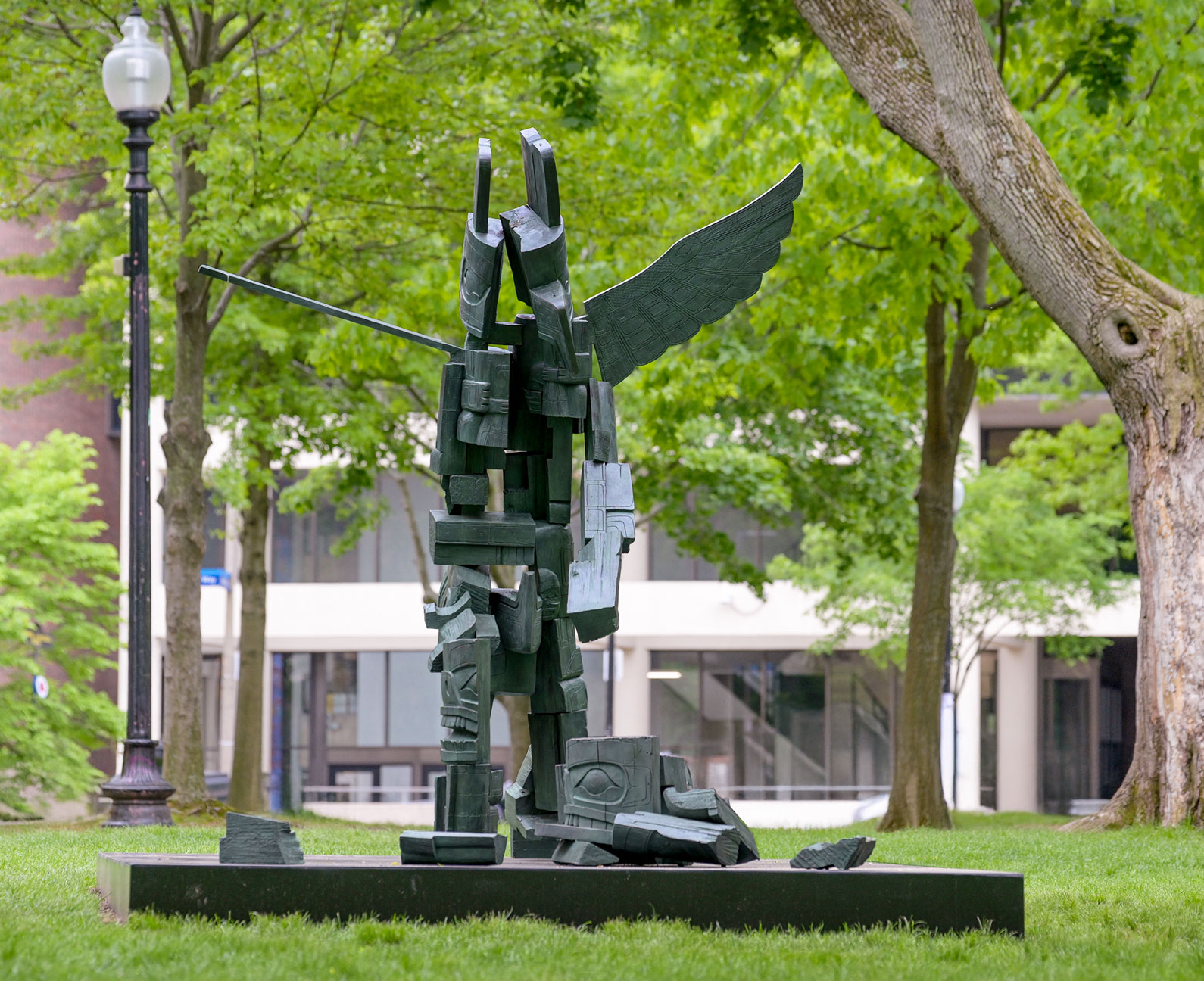
2025
This Herculean bronze sculpture cast from deconstructed faux totem blocks serves to indict settler sabotage of Native technology and culture. Unlike today’s digital records—from genealogical databases to virtual versions of sacred texts like the Bible—Tlingit data is carved in wood. Galanin’s totem poles underscore their function as information systems, their carvings encoding history, mythology, and family.
COURTESY OF THE ARTIST
Petala Ironcloud is a California-born Lakota/Dakota and Jewish writer and textile artist based in New York.


